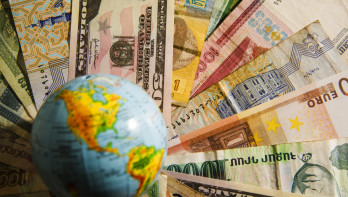Opinion Han de Jong
Economy muddles through the summer
The Chinese industry is disappointing, although retail sales are positive. The Dutch consumer just doesn't seem to become more optimistic. A soft landing is expected for the United States, but weaknesses are visible. The global economic outlook is currently quite unclear. Actually, the picture is 'mixed' everywhere, meaning that some figures are positive, while others are negative.
Take China, for example. Industrial production growth disappointed in May, falling from 6.7% year on year to 5.6%. However, retail sales performed slightly better. With a year-on-year growth of 3.7% in June, they were better than the 2.3% growth in May, but it's not an impressive figure.
Or take our own country. This year shows an improvement in purchasing power. Wage growth exceeds inflation. Yet, consumers are not very enthusiastic. At least, not according to the consumer confidence index of the CBS. It dropped by one point in June, following a one-point decrease in May. The index is still well below the long-term average.

Or take the eurozone
The ZEW index, measuring analysts' confidence, rose from 47.0 in May to 51.3 in June, and the chart shows that this indicator is also at a high level in historical perspective.

On the other hand, business confidence weakened in June. The purchasing managers' index for the eurozone dropped from 52.2 in May to 50.8 in June. Both the industry (45.6 in June, compared to 47.3 in May) and the services sector (52.6 compared to 53.2) saw a decline. Europe particularly lags behind in the industry compared to other regions. In the US and Japan, the purchasing managers' index in the industry was above 50 in June. I think it's an indication that the European industry has a structural problem: much higher energy prices than elsewhere.

Or take the US
Industrial production in the US increased by 0.9% in May compared to April. And most comments I read are fairly optimistic. Last year, many economists feared a recession in the US. It didn't happen. In fact, the growth exceeded expectations by far. Now economists are less pessimistic. The soft landing is by far the most popular scenario among forecasters. However, there are some weaknesses to point out. The interest rate 'bites' and interest-sensitive sectors feel that. Although house prices are still rising, the buying interest is moderate, reflected in the confidence index among homebuilders.

What stands out in the US is the trend of the so-called 'Economic Surprise Index'. This index measures on a daily basis whether macroeconomic figures are better or worse than expected. Since early May, this index has been below zero, as the chart shows. This means that more disappointments are recorded than positive surprises. Despite the increased confidence in the American economy by many economists, I find the figures not so convincing.

To conclude
I am going on vacation and then to an economists' conference. It's hard to say how the global economy will be when I return. The picture is very mixed, and that applies to all major blocks. Positives and negatives alternate. It's a bit of 'muddling through'. I don't see anything changing that in the short term.
I will be 'offline' for a few weeks. I hope to be back fresh and writing comments regularly in July. Until then!

Han de Jong
© DCA Market Intelligence. Op deze marktinformatie berust auteursrecht. Het is niet toegestaan de inhoud te vermenigvuldigen, distribueren, verspreiden of tegen vergoeding beschikbaar te stellen aan derden, in welke vorm dan ook, zonder de uitdrukkelijke, schriftelijke, toestemming van DCA Market Intelligence.



